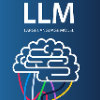In large language models (LLMs), certain neurons can store distinct pieces of knowledge learned during pretraining. While knowledge typically appears as a combination of relations and entities, it remains unclear whether some neurons focus on a relation itself -- independent of any entity. We hypothesize such neurons detect a relation in the input text and guide generation involving such a relation. To investigate this, we study the Llama-2 family on a chosen set of relations with a statistics-based method. Our experiments demonstrate the existence of relation-specific neurons. We measure the effect of selectively deactivating candidate neurons specific to relation $r$ on the LLM's ability to handle (1) facts whose relation is $r$ and (2) facts whose relation is a different relation $r' \neq r$. With respect to their capacity for encoding relation information, we give evidence for the following three properties of relation-specific neurons. $\textbf{(i) Neuron cumulativity.}$ The neurons for $r$ present a cumulative effect so that deactivating a larger portion of them results in the degradation of more facts in $r$. $\textbf{(ii) Neuron versatility.}$ Neurons can be shared across multiple closely related as well as less related relations. Some relation neurons transfer across languages. $\textbf{(iii) Neuron interference.}$ Deactivating neurons specific to one relation can improve LLM generation performance for facts of other relations. We will make our code publicly available at https://github.com/cisnlp/relation-specific-neurons.
翻译:暂无翻译





